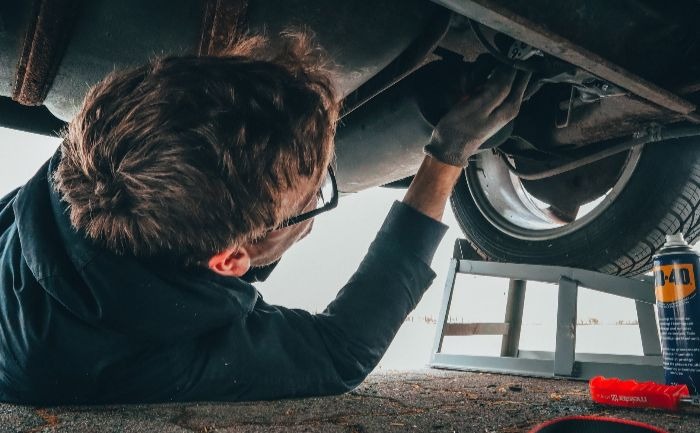Whether you rely on cars, vans, bikes, or something else entirely, running a business fleet, large or small, is not something to slouch on. Vehicles can quickly become money pits if you let them, and your drivers can be just as big a source of loss without the right training, investment, and management. Here, we’re going to look at some of the keys to ensuring your fleet makes financial sense.
Consider Your Funding Alternatives
When it comes to actually purchasing the vehicles that you need to complete your fleet, you may not always necessarily have to go for the option of financing it yourself or buying it all in one go. There are ways to split the funding and the ownership of the vehicle with your staff, for instance. Financing fleet options include contract hire and hire purchase options just like any other business equipment.
However, there are also options like the salary sacrifice, in which employees give up part of their salary to pay for the vehicle in exchange for non-cash benefits. Shared financing and ownership options are a good way of getting employees invested in the business, as well.
Calculate The Lifelong Costs
When considering which vehicles to purchase, make sure that you’re not just looking at the price tag on the vehicle. You have to break it down into its whole life cost with the help of sites like Financialmentor. This can help you figure out not only how much you’re likely to pay on any given finance deal, but can also help you learn the average running fuel costs, and how much you’re likely to pay in maintenance and repair over a long period of time.
As such, it’s necessary to develop a whole life cost estimate to be much more accurate in figuring out the return on investment of any vehicle that you consider buying.
Create A Service Schedule
Naturally, any vehicle will last a lot longer and the eventual repairs will cost you less the better that you look at your vehicle. Getting your business car serviced is essential. It’s important to track this for every vehicle that you own so that they don’t fly under the radar, so to speak. Create a digital service schedule that you check every day or week to see when the next servicing is needed and for which vehicle.
It’s important to find mechanics near you that are used to dealing with business clients, as well. They are more likely to be aware of the value of working with partners who are likely to need their services over longer periods of time and, as such, could potentially offer more cost-effective services for you.

Take Care Of It Yourself
Naturally, the less that you rely on mechanics and outsourced garages, the better. Hiring your own certified mechanics can help you take a lot of the costs in-house without having to worry about markups. Many businesses that operate fleets ensure that the drivers are responsible for their vehicles and equip them with the training and pay them for the time of maintaining the vehicles themselves.
Similarly, suppliers of parts like Solomotoparts could help you save money. It’s part of the garage business model to mark up the prices of the parts that they get from manufacturers and suppliers. You can skip those costs by going straight to the suppliers, yourself.
Teach Your Employees To Drive
Of course, you’re only going to employ drivers that know how to drive. If your fleet includes heavier vehicles such as eight-wheelers, then they should be fully certified, too. However, we’re talking about teaching them fuel economical driving habits and other ways that they can save money on the road.
By teaching them the importance of gentler accelerating and deceleration, of finding the routes least likely to be clogged by traffic, and such, you can make every journey less costly to you and your business. Having economic driving habits as a frequent subject of your team meetings can ensure your drivers are doing their part to make the fleet a much better business investment.
Track, Track, Track
Nowadays, it has become much easier to see how much, exactly, your fleet is costing you. This is all thanks to telemetric GPS tracking and fleet management systems such as those available from Zubie. First of all, they can show you the route that your drivers are taking and how much time they take, so you have raw data to rely on when looking at changing up routes in future.
Furthermore, many of them also take into account driving habits that lead to higher costs due to the increased risk of accidents, wear and tear, and fuel consumption rates. As such, you can more easily find those drivers who may need a little more instruction and point out exactly what they’re doing wrong and where they can improve.

Know The Tax Implications
As with all assets in the business, there are tax implications to your vehicles and understanding them means you could be paying less in your taxes. TruckingSOS goes over a few different tax tips for truck drivers and small fleet owners. Recording your fleet expenses thoroughly is the key to ensuring the best chance of qualifying for deductions that you rightfully deserve.
However, the single best way to make sure that you’re paying only the tax that you should be is to rely on a chartered accountant. Outsourcing your accounts come tax season can make sure you’re only paying what you need to while ensuring you don’t make any mistakes that could send the kind of red flags that attract the auditors.
If you have trouble managing your own fleet, it may be time to consider whether you should really run it yourself. If your business is too small and you don’t have the manpower with the time to monitor and maintain it, you might want to rely on outsourced fulfilment services, instead. The aim is, undoubtedly, to take over the logistics of your deliveries yourself, but you don’t have to do it immediately.

